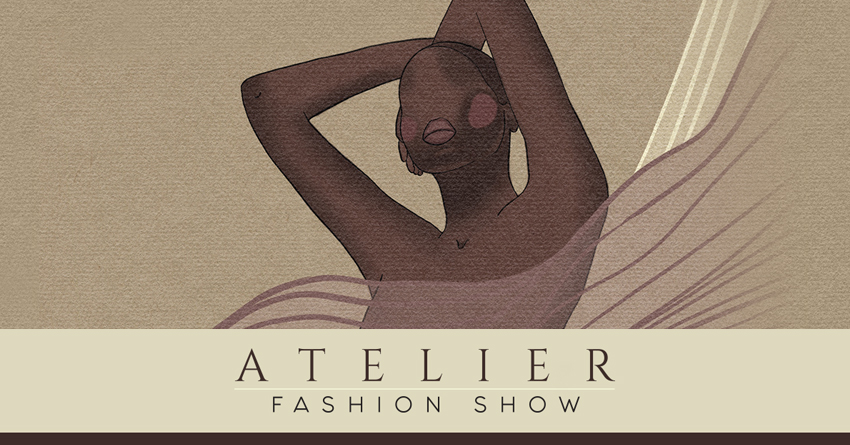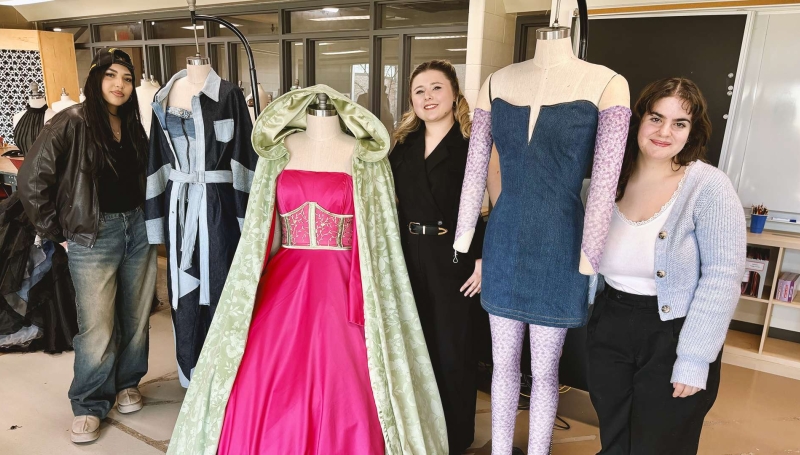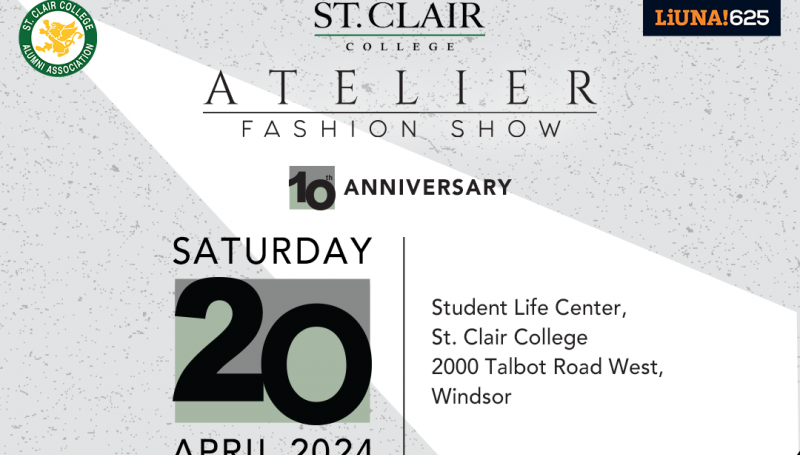Sewing the Seeds of Change - High School Competition - Apply Here
Program Overview
Design, innovate and create are the fundamentals of the Fashion Design program. Simulating industry standards and practices, students will become skilled in the essentials of pattern making and garment construction. Core curriculum includes fashion marketing, illustration, textiles, computer-aided design and product development. St. Clair delivers the program in new fashion labs, which provide an inspiring and nurturing environment. Blending hands-on labs with field trips and behind-the-scenes experience will prepare the graduate to start their career in the fashion industry.
Program Highlights
- Annual fashion show highlights student creations and gives students the chance to network with local retailers and guests at a pop-up shop at the fashion show.
- Opportunity for students to volunteer backstage or assist the costume designer for the Music Theatre program.
- Faculty are industry professionals.
- Industry field trip to tour manufacturers, fabric suppliers, design studios, and exhibits.
- Be part of a production team for a charity project.
- Students present their collections to a panel of industry professionals.
- Photo shoots of the students' garments are completed as part of their portfolio.
- Participate in local fashion events to gain hands-on experience.
Career Opportunities
Employment may be found in clothing and textiles companies, retail establishments, and manufacturing companies or through entrepreneurial opportunities. Graduates may also find design and production opportunities in film, television, theatre and video productions, and garments and textiles.
Admission Requirements
OSSD with the majority of courses at the College(C), University (U), University/College (M) or Open (O) level qualify for admission to this program.
The ability to read/understand garment patterns and sewing skills at the basic level is recommended for success in this program.
Mature students - See Admission Procedures for details.
Courses
Please scroll to the bottom of the list to review the Pre/Co-Requisites.
The curriculum below is for incoming students:
Past Cohorts:
Semester 1
| Code | Title | Credits |
|---|---|---|
| FAS100 | Fashion Drawing | 3 |
| FAS108 | Fabric Science | 3 |
| FAS104G | The World Of Fashion | 3 |
| FAS106 | Garment Construction I | 5 |
| FAS109 | Pattern Drafting I | 5 |
Semester 2
| Code | Title | Credits |
|---|---|---|
| FAS200 | Product Development | 3 |
| FAS309 | Software-Based Fashion Design | 3 |
| ELEC1030 | Choose 1 Elective Course | 3 |
| FAS208 | Garment Construction II | 5 |
| FAS209 | Pattern Drafting II | 5 |
| FAS211 | History Of Costume | 2 |
Semester 3
| Code | Title | Credits |
|---|---|---|
| FAS310 | Intro To Computerized Drafting | 3 |
| FAS204 | Draping | 3 |
| FAS306 | Garment Construction III | 6 |
| FAS307 | Pattern Drafting III | 6 |
| ELEC1030 | Choose 1 Elective Course | 3 |
Semester 4
| Code | Title | Credits |
|---|---|---|
| FAS411 | Fashion Marketing And Presentation | 4 |
| FAS405 | Technical Design For Fashion | 3 |
| FAS408 | Garment Construction IV | 5 |
| FAS409 | Pattern Drafting IV | 5 |
| FAS410 | Computerized Marker Making & Grading | 2 |
Program Physical Demands Analysis
Program Vocational Learning Outcomes
Fashion Technique and Design (Ontario College Diploma) (MTCU Code 51823)
The graduate has reliably demonstrated the ability to:
- Utilize free-hand and computer assisted software for pattern drafting and grading that meets industry standards.
- Incorporate theories of colour, textile, surface design, and trends into the design and construction of garment pieces.
- Operate domestic and industrial sewing machines and equipment for the creation and construction of apparel.
- Observe and analyze the evolution of fashion trends and the sociological and psychological factors which influence the shape of fashion today.
- Design and illustrate digital and hand-drawn collections demonstrating a refined level of fashion design and technical skills.
- Establish and maintain a branding package and portfolio of designed and constructed collections suitable for professional use and display
- Construct and finish a wide range of apparel consistent with professional standards.
- Determine and implement solutions to problems encountered in the production phase of the garment design process.
Additional Information
- Fashion Design Faculty Bios
- Fashion Kit List for 1st Year Students
- Tailoring Kit List for 2nd Year Students






